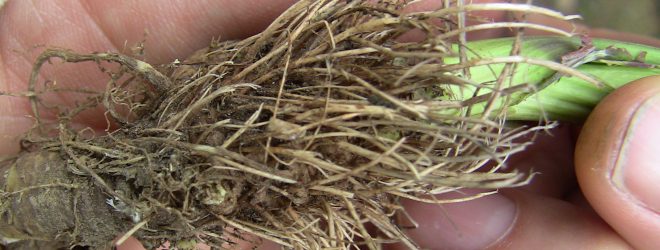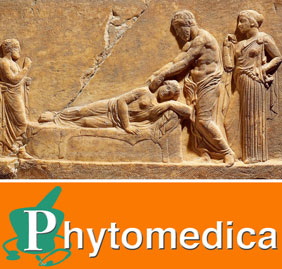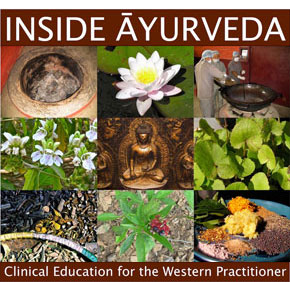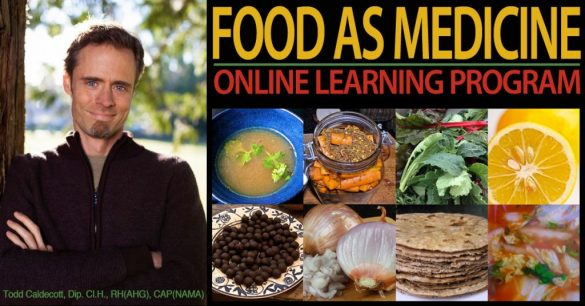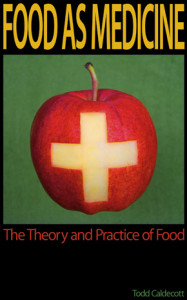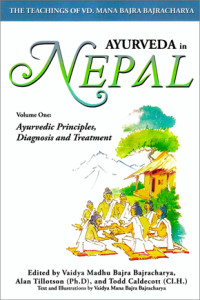(pictured above Ligusticum canbyi)
Well, it’s that time of year, and people are dropping like flies. Why is it that almost everyone succumbs to sickness during that fall, and how can we prevent it?
From the perspective of medical science, a cold or flu is caused by one of over 200 different viruses, most commonly one of the rhinoviruses, coronaviruses, influenza viruses or the adenoviruses. Typical symptoms include cough, sore throat, runny nose, sneezing, and fever, and while most people get better in about seven to ten days, some symptoms can last up to three weeks or longer. While the science isn’t clear, it is generally thought that susceptibility to viral infection occurs during this time due to factors such as decreased humidity, which increases viral transmission rates by allowing tiny viral droplets to disperse farther and stay in the air longer, as well as the fact that most of use spend more time indoors, which enhances viral transmission. But apart from that, medical science doesn’t have too much to say, and when it comes to treatment and prevention, there are few options, including the flu vaccine that researchers say provides only a modest benefit at best, with a small risk of certain diseases including Guillain-Barré Syndrome. Thankfully, we have other options. But before we review these, let’s look at why we get sick.
Is the common cold caused by cold?
For almost a hundred years now doctors have dismissed the idea as an “old wive’s tale”, that it is exposure to cold weather that causes the common cold. Given my healthy respect for “grandma wisdom”, I have always railed against such an attitude, not only because it easily dismisses this kind of non-technical assessment, but also because it denies the very experience of getting a cold, which itself FEELS cold! Thus, despite the non-technical use of the term “cold”, it is a term that defines not only the experience but the basic pathology, which relates to a down-regulation of the bodily heat, and the diminishment of the immune response which relies upon this heat to function. I think it is important to honour the language of disease, because even simple words like “cold” not only tell us about the experience itself, but provide clues for treatment. Likewise are our use of idioms such as “venting the spleen”, which allows to connect emotions like anger and frustration to the health of the visceral organs. After all, when you feel frustrated and angry, where do you feel it? In some discrete part of your cerebral cortex, or in your belly? In this way, simple terms like catching a “cold” provide us with more information than we might immediately be aware of.
Dispelling the cold
It is no co-incidence that we catch colds more frequently during the fall and winter. In the classical system of medicine of India, called Ayurveda, the period from the summer solstice to the winter solstice is called the “dakshinayana”, when the north pole tips away from the sun and the northern hemisphere is plunged into increasing darkness. It is said that during the dakshinayana the empowering influence of the sun diminishes, and in response all life hunkers down to wait out the season of death and dissolution. Thus during the dakshinayana the dominant quality is one of coldness, and thus it should be no surprise that archetypal diseases such as “cold” become more dominant. Part of this relates to our growing inability to synthesize vitamin D3 from sunlight, and with diminished vitamin D3 production immune function begins to weaken.
Here in Vancouver, we stop producing vitamin D around mid-September, when the shadow cast by your shadow at mid-day (when the sun is highest in the sky) is now longer than your height. The low angle of the sunlight means that too much ultraviolet B light is filtered out by the atmosphere, and without sufficient UVB, the body cannot produce vitamin D3. Thus traditional fall/winter foods such as marrow broth, little oily fish (e.g. smelts and herring), liver and blood pudding are relied upon to help boost vitamin D levels, although because many people don’t eat these foods regularly, they don’t get their full benefit. This is why for most people supplementing with vitamin D3 is a good idea, and to this end I recommend liquid vitamin D3 drops that contain 1000 IU per drop, usually in the neighbourhood of around 3-5 drops per day (3000-5000 IU).
Not everyone gets the full benefit of an oral dose, however, particularly if you suffer from chronic diseases of the digestive tract and liver, including malabsorption issues. Thus I frequently recommend topical administration, either as a transdermal cream, or the judicious use of sun-beds. While the latter might raise some eyebrows, there is a growing body of evidence that a non-erythemal dose, i.e. not allowing the skin to even become slightly pink, is an excellent way to boost vitamin D3 status. There is further evidence that UV light not only promotes vitamin D synthesis, but is an independent factor in supporting immune function generally. Thus there should be little surprise that judicious UVB exposure may be helpful in autoimmune diseases such as Crohn’s disease. The exposure of our bodies to UVB light is exactly the way we evolved to manufacture vitamin D3, and when we do, we provide many more sites for vitamin D synthesis and metabolism than a simple oral dose, including the involvement of other tissues such as the prostate, colon, skin and osteoblasts. Besides which, the judicious use of sunbeds provides very clear psychological benefits in Seasonal Affective Disorder, and guess what – it WARMS you up. Since I have been visiting a solarium once a week, from Oct-March, I haven’t had a cold in three years. The key issue, however, is NOT TO TAN, as this defeats the purpose by increasing melanin production, which inhibits your ability to absorb UVB light and blunts its benefit in the body. Over the long term, however, it is probably better to rely upon the sun for vitamin D synthesis (e.g. tropical vacation), and find a balance of other options that suits your individual needs.
Preventing ama
In Ayurveda, the underlying pathogenesis for the common cold relates to poor digestion, and the production of a waste product called “ama”, which literally means undigested food. Viewed as a kind of detritus that interferes with digestion, ama can mobilize from the digestive tract into circulation, where it interferes with the proper nourishment of cells and the elimination of cellular and lymphatic wastes. According to Ayurveda, ama is associated with the qualities of heavy, cold, greasy, sticky and slow, and it is easy to see how these qualities could impair both digestion and metabolism. The primary cause for the accumulation of ama is weakness of digestion, and/or eating foods which increase the qualities of heavy, cold, greasy, sticky and slow in the body. These qualities promote symptoms such as lassitude and inertia, coldness, poor circulation, mucus congestion, poor appetite and indigestion, all of which are prominent symptoms with a cold or flu. Thus the best way to prevent as well as treat the common cold, is to stop the accumulation of ama, which includes avoiding all the foods that promote the qualities of heavy, cold, greasy, sticky and slow. This means avoiding excessively greasy and fatty foods unless your digestion is very strong, as well as congesting foods such as flour products, dairy and sweets. In particular, watch for minor symptoms of congestion, such as increase in mucus, and take appropriate measures in hand to prevent the accumulation of ama. In Ayurveda, this includes not only avoiding those heavy and congesting foods, but actively eating foods and beverages to warm and stimulate the body, such as ginger tea, Mulligatawny soup and a spicy Kitchari.
Destressing
Immune function is influenced by the health of our nervous system, and when we’re stressed and tired, our immune system begins to suffer. Energy is energy is energy, and if you are using up all your vital energy rushing from hither to thither, trying to keep up with work load, commitments and family, you shouldn’t be too surprised if you get sick. It is said in Ayurveda that the dakshinayana takes “energy away from the people”, and so we need to respect the fact that we are simply more susceptible to illness and disease in the fall. Partly this relates to the dynamics of doshas in Ayurveda, and the natural increase of vata during the autumn. This period is marked by dissolution and deficiency, and we need to take active measures to protect our vital energy. According to the ancient Indian physician Charaka, the most important way to do this is to avoid stress and worry, which perhaps sounds easier than it is, but it is a recommendation by Charaka to take some time to go within and destress the mind. Options include activities such as yoga, meditation, and tai qi, as well as fun ways to release stored anxiety in a creative way, through activities such as dance, art, singing, poetry, and music. In this way, the dakshinayana is a time to go within, and recharge the emotional batteries.
Herbs for colds and flu
According to Charaka, another way to preserve the vital energy is to take herbs that protect the heart and promote circulation. In Ayurveda, however, this means something a little bit different, as the heart isn’t viewed simply as a mechanical pump, but also as the seat of the mind and emotions. Thus herbs to calm the mind and enhance vitality are definitely indicated during cold/flu season to stay healthy. In my clinic, I often give patients my “Immune formula” to stay healthy, which includes an assortment of herbs used in both Ayurveda and Chinese medicine to boost immune function and calm the mind. Some of the herbs in this formula include Reishi mushroom, Astragalus root, Schizandra berry, Siberian Ginseng root, Ashwagandha Myrrh resin, and Licorice root. And while I don’t use this formula to treat colds/flu, some of the herbs may be very helpful. For example, during the SARS outbreak of 2002-2003, one of the more effective remedies to inhibit the cytokine explosion that was killing otherwise healthy patients was a component of Licorice root. My favourite go-to remedies for cold and flu are all those which are warming, opening and clearing in action. Remember, we are dealing with a COLD, and so most of our remedies need to be spicy and warming. Examples include Bayberry bark, Ginger root, Prickly Ash bark, Cinnamon bark, Black Pepper fruit and Peppermint leaf. These are all good remedies for nascent symptoms, when you just start to feel yourself getting sick. But if it progresses further, then you may need to kick it up a notch, and add in some stronger antiviral remedies such as Lomatium root, St. John’s Wort flower, Canby’s Lovage root (pictured at the top), and Echinacea (angustifolia) root. Usually this will take care of the major symptoms, but if you just can’t beat it and it descends into your chest, causing a cough, then we need to alter our strategy, adding in expectorants and cough remedies such as Mullein leaf, Wild Cherry bark, and Elecampane root, and if the cough gets real bad, herbs such as Cottonwood bud, Gumweed leaf/flowers or Lobelia leaf. For kids up at night with a chronic cough, a little bit of Lobelia, or even Ephedra (Ma Huang, in small doses) mixed with a herb like Licorice can help to ease cough and promote a restful sleep. In addition to this, I am really big on inhalant therapies, using essential oils such as Fir, Pine, Cedar, Spruce Cajeput, and Eucalyptus. These can be used with a hot pot of water and a towel, or, you can use a bed-side warm-mist humidifier that has a medicated well, using about 1/2-1 tsp of the oils per session. Similarly aromatic topical therapies are also helpful, not least the old-fashioned “mustard plaster”, prepared by grinding up mustard seeds and mixing with a little water, and then applying this to the chest and back, overtop a piece of wax paper. The powerful essential oils in the mustard seed will pass through the paper and migrate into the lung tissue, where they exert both a strong antimicrobial effect, as well as ease coughing. Remove the plaster after 10-20 minutes, or when the area underneath becomes reddened.
While this is by no means an exhaustive review of the treatment of cold and flu, hopefully you’ve learned some valuable tips to stay healthy this season. For more information, please check out my page on Cold, Flu and Fever.
